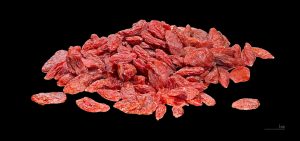How to Grow Goji Berries – A Guide to Growing Goji Berries
 Goji Berries
Goji Berries
Goji berries (Lycium Barbarum), aka Chinese Wolfberry or Duke of Argyll’s tea-tree, are fully hardy deciduous shrubs originally from the Himalayas and easy to grow. They rose to fame as a ‘super food’ loaded with anti-oxidants. Time will reveal how valid this claim is, and how much is hype.
An important note for those who take warfarin, be aware that the berries contain vitamin K.
Goji Berries can be container grown or planted in the garden. The berries are used fresh in baked goods, teas, power shakes, or dried for various uses. The plants requires two to three years before they produce their famous red berries.
Recommended Varieties of Goji Berries
There is only one variety to date, and easily obtained
Goji Berry Pests and Problems
Aphids might be a problem
Birds are attracted by the bright red berries so netting is advised
Cultivating Goji Berries
- Goji berries are difficult to grow from seed so started plants are recommended from a reliable source.
- Because goji berries are part of the tomato and potato family, illegally imported plants tend to carry diseases that could potentially devastate existing crops in the UK, stick with reputable suppliers
- Mature plants can reach 3 m (10 ft) in height and 4 m (13 ft) in width, so select their placement carefully. Both height and width are easily controlled by pruning to size.
- If pot grown, select a sizable pot filled with John Innes No. 2 compost and add extra grit or sand for drainage. Mix in some slow release general fertilizer every spring or use a tomato-based fertilizer every two weeks. Water regularly if required. Control size with yearly pruning to half size, which also reduces the harvest.
- If direct planted, goji plants prefer a free draining soil enriched with well rotted manure. Space plants about 2 m (6 ft) apart. A sunny, sheltered area is ideal.
- Mature plants have spines so garden gloves are recommended.
- Water regularly during fruiting times
- Flowers and fruit appear on the previous year’s growth. Lightly prune in spring to remove broken or oddly-shaped branches, and some of the oldest wood. Suckers also need to be pruned.
Harvesting, Eating and Storing
- Harvest begins after two to three years
- Only the fully red berries are edible.
- When handled, the berries can turn black. To avoid this problem, set a clean sheet under the plant and shake off the ripe red fruits.
- Fresh berries can be used in baking, teas, or dried for long term use.
- Caution for wafarin users: the berries contain Vitamin K



